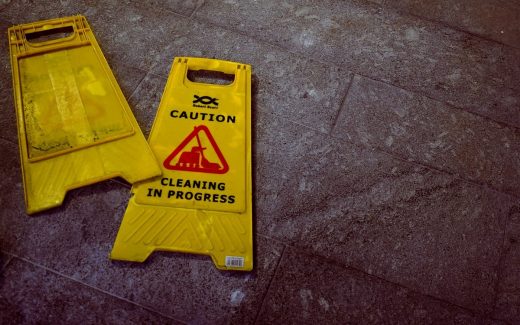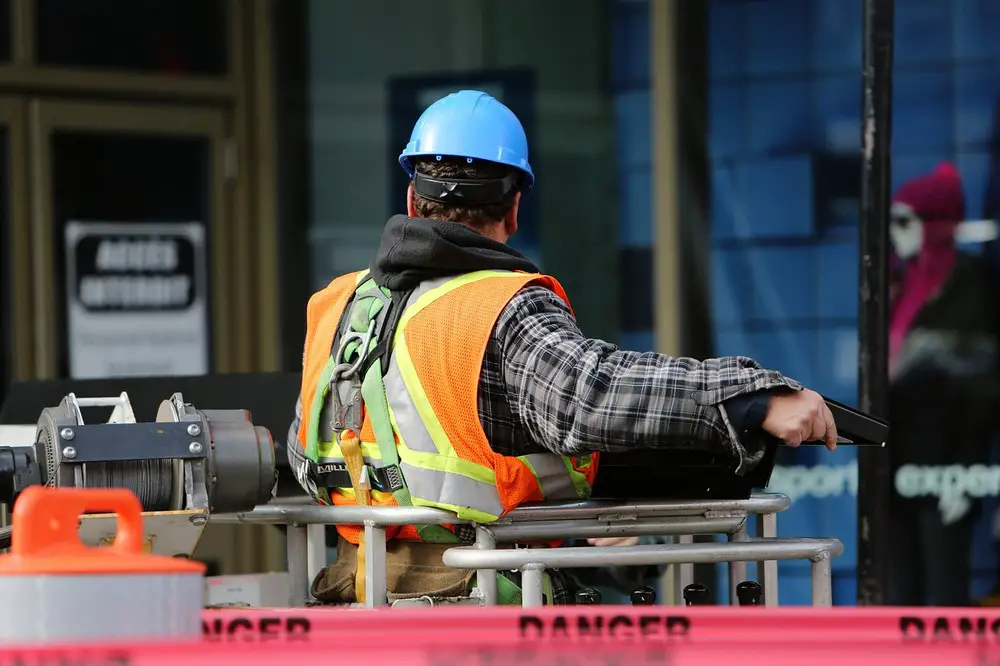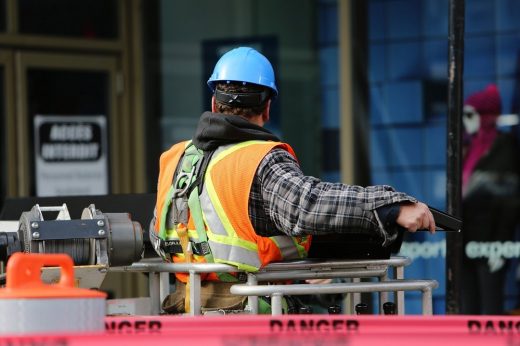Enhance safety for construction site workers advice, Safe building site work guide, Build H&S tips
Enhance Safety for Construction Site Workers
10 Aug 2023
Empower your construction journey: To enhance safety for construction site workers
Construction is a world of bustling activity where towering structures and intricate designs become reality. Safety always takes centre stage amid the noise of drills, hammers, and heavy machinery. Whether you’re a seasoned construction veteran or a newcomer to the site, one thing remains constant: proper training is crucial for a secure and successful construction journey.
Imagine yourself high above the ground, taking in the breath taking view from your workstation. Every step and movement requires precision in this environment. However, with proper training, you are equipped with the skills to conquer this challenge. Training transforms uncertainty into confidence and potential danger into a calculated opportunity.
This blog will guide you through “Essential Trainings Every Construction Site Worker Should Consider.” From foundational principles to specialised skills, we will provide a landscape of knowledge to ensure your well-being and success on the construction site.
Join us on a journey through the world of essential construction site training, whether you’re a beginner or an experienced professional seeking to update your skills. As you acquire new knowledge, you’re improving your safety and contributing to a culture of accountability and excellence that resonates throughout the construction sector. Get ready to become a safety-conscious construction site warrior, as your adventure begins now.
Essential training programmes
1) OSHA 10-Hour/30-Hour Training
In the construction industry, safety regulations are primarily introduced by the Occupational Safety and Health Administration (OSHA), which is considered the benchmark. To ensure a safe work environment, it is essential for anyone working on a construction site to undergo OSHA 10- or 30-hour training. This training is comprehensive and covers a wide range of topics such as hazard recognition, emergency procedures, personal protective equipment (PPE), and more. By obtaining OSHA certification, individuals improve their safety knowledge and increase their employability and ability to promote a safety culture at work.
2) Ladder safety training
Despite appearing harmless, ladders are a major cause of accidents on construction sites. To prevent falls, it is essential to receive adequate ladder safety. This training is not limited to climbing up and down but also includes techniques to reduce risks such as proper ladder positioning, following weight limits, and maintaining three-point contact. By becoming proficient in ladder safety, you are safeguarding yourself and creating a safer workplace for those around you.
3) Fall Protection and Working at Heights
Working at construction sites can involve working at great heights, which increases the risk of falls. Workers must undergo fall protection and height safety training to prevent such accidents. This training provides them with the necessary skills and knowledge to work safely on elevated surfaces, including the proper use of safety harnesses, scaffold safety, and safe ladder use. In the following section, we will explore the use of safety harnesses in more detail.
4) Confined Space Entry
Confined spaces like trenches, tunnels, and maintenance holes are frequently encountered on construction sites, in addition to the towering structures. To ensure the safety of workers in these distinctive workspaces, it is crucial to undergo confined space entry training. This training equips workers with the ability to recognise potential hazards, comprehend atmospheric testing and ventilation, and become proficient in rescue procedures. With this training, you can confidently undertake confined space work and minimise potential risks.
5) Safety Harness Training
Fall protection revolves around safety harnesses, which are crucial in high-risk situations, serving as your lifeline. The objective of safety harness training is to ensure that you have a harness on and that it is worn accurately and efficiently. This training encompasses the details of harness parts, appropriate fitting, and adjustment methods, with the ultimate aim of preventing falls. In the event of a fall, the training guarantees that you are securely suspended and prepared for rescue.
6) Electrical Safety
The modern world heavily relies on electricity, yet it poses great dangers, particularly in construction areas. To ensure safety, it is important to undergo electrical safety training to become knowledgeable in identifying electrical hazards, executing lockout and tagout protocols, and utilising insulated equipment. Having a grasp of electrical circuit fundamentals and taking necessary precautions is crucial to preventing electrical mishaps and protecting oneself and co-workers.
7) First aid and CPR
Construction sites are not immune to emergencies, and it is important for all workers to know first aid and CPR. Being able to offer immediate assistance in case of an accident can make all the difference and even save a life. The training involves learning to assess injuries, perform CPR, and correctly use first aid supplies. The sense of assurance that comes with being able to handle critical situations is invaluable.
8) Tool and equipment safety
Construction relies heavily on tools and equipment, but accidents can occur if used improperly. Receiving safety training for tool and equipment usage is crucial, which goes beyond just handling them. This training involves becoming proficient in their safe operation, whether it is a basic hand tool or a sophisticated power tool. You will learn how to inspect, maintain, and use them correctly, minimising the likelihood of accidents and guaranteeing that your tools remain reliable partners on the worksite.
Enhance Safety for Construction Site Workers Conclusion
Construction sites are constantly changing environments where safety is of utmost importance. The training we have discussed, such as ladder safety and safety harness training, establishes the basis for a safety culture. Each training equips you with crucial skills and knowledge to navigate potential hazards, prevent accidents, and contribute to a secure work environment.
It is important to remember that investing in these trainings is not just about meeting requirements; it’s about investing in your own safety and that of your colleagues. You become an essential part of a chain that upholds safety and drives progress by improving your skills and staying informed. Therefore, take the initiative to seek out these essential trainings and embark on a journey of learning that will benefit you, your colleagues, and the industry for years to come. Stay safe, stay informed, and continue building a safer future, one training session at a time.
Comments on this Empower Your Construction Journey: To Enhance Safety for Construction Site Workers article are welcome.
Accidents
Safety for Construction Sites – Avoid Workers Accidents
Common but avoidable workplace accidents
Common Types of Accidents on Construction Sites in UK
After a construction accident advice
Slip and fall accidents and emotional distress

Law & Legal
Law Posts
Responsibilities of a Construction Lawyer
How to meet compliance with Local Law 97 NYC
Water damage from leaks: construction lawsuits
Residential Architecture
Comments / photos for the Enhance Safety for Construction Site Workers page welcome






